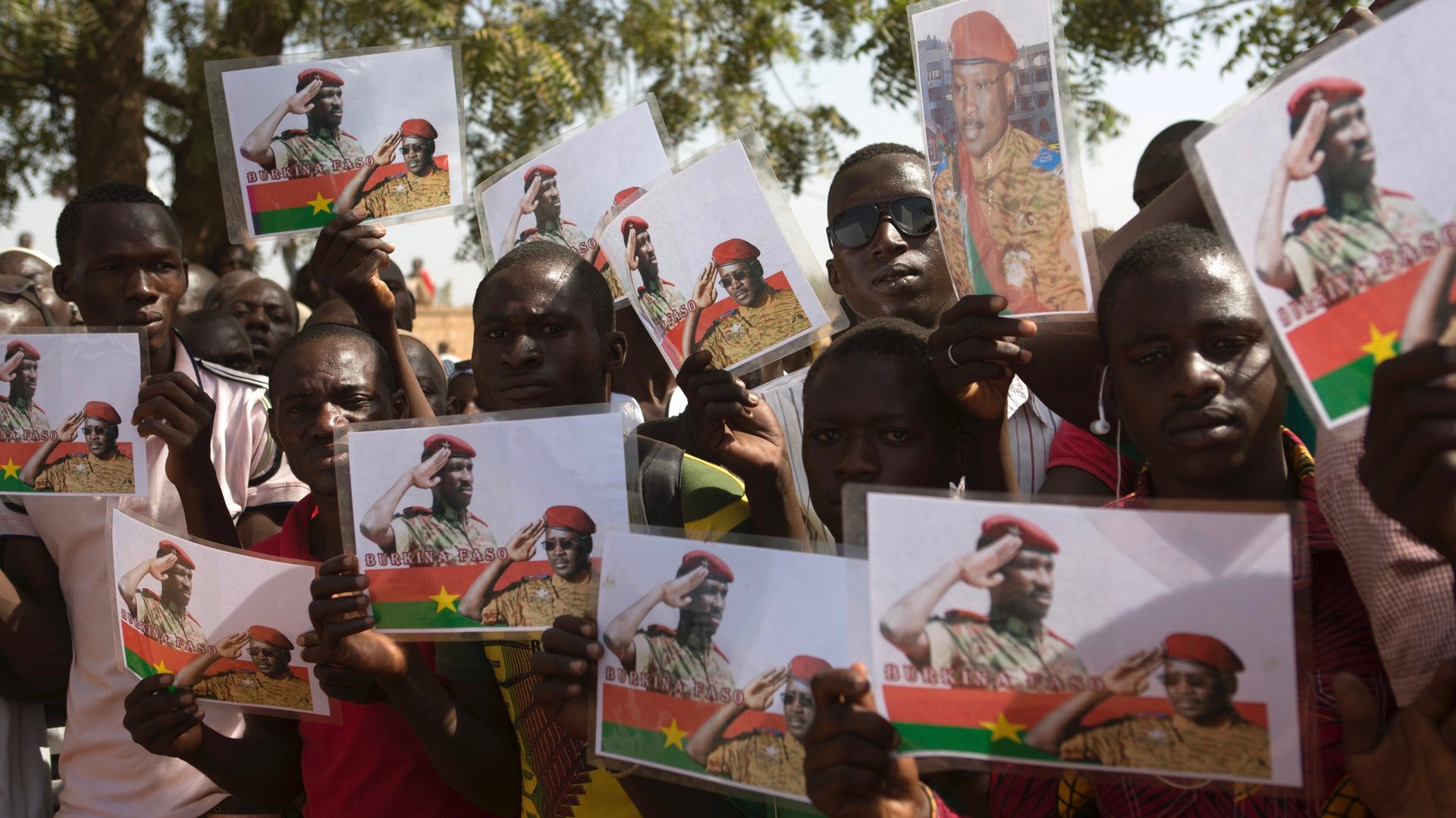Burkina Faso is restoring Thomas Sankara’s legacy with a bronze statue
More than three decades after his assassination, Burkina Faso is celebrating Thomas Sankara with a new monument. Two years ago the revolutionary leader once again became the face of a popular movement, and the new statue unveiled over the weekend in Ouagadougou formalizes his place in a new political era._


More than three decades after his assassination, Burkina Faso is celebrating Thomas Sankara with a new monument. Two years ago the revolutionary leader once again became the face of a popular movement, and the new statue unveiled over the weekend in Ouagadougou formalizes his place in a new political era._
The five-meter bronze statue, which stands on a four-meter base, depicts Sankara in his army fatigues, ready to take a step forward with his arm raised and his face to the horizon. It is exactly the kind of leadership Sankara has come to represent to a new generation of Burkinabé and across Africa.
Sankara is memorialized along with the busts of 12 of his comrades who were also killed in the 1987 coup. The monument was designed by Burkinabé sculptors who answered a public call to artists and architects to contribute to the project and was led by renowned artist Jean-Luc Bambara. The statue will form part of mausoleum, museum, gallery and conference space, all of which are are the result of a national effort to revive the legacy of Thomas Sankara. It’s unclear how much the statue cost, but the memorial project leaders crowd-funded, invited donations and offered memberships of 15,000 CFA ($26) to the memorial committee.
On the 30th anniversary of his death, Burkinabé officials announced a plan to create a memorial to restore Sankara’s rightful place in history. With former Ghanaian president and a close friend of Sankara’s, Jerry Rawlings as the honorary president, the International Memorial Committee for Thomas Sankara was founded in 2016. It is, according to the founders, an effort to unify the various projects that have already started to restore Sankara’s legacy.
After taking over in the 1987 coup, former president Blaise Compaoré suppressed Sankara’s legacy. Before his death, Sankara used his brief presidency from 1983 to institute bold reforms, renaming the country, composing a new anthem and creating left-leaning policies of economic self-reliance that are still popular today. Sankara was also one of the earliest examples of a feminist leader who understood that empowering women empowered the whole country.
All of this, along with his austere lifestyle and rejection of neocolonialism made him the ideal symbol for the 2014 uprising that removed Compaoré after 27 years in power. Now in exile in Côte d’Ivoire, Compaoré is wanted in Burkina Faso to answer questions for his role in the death of the father of the revolution. With Compaoré gone, Sankara’s ideas and imagery have again become a popular movement in Burkina Faso.
Yet, celebrating Sankara’s legacy has not distracted from the political factionalism of then and now. Current president and Sankara champion, Roch Marc Christian Kabore was an ally of Compaoré’s and once served as his prime minister before they fell out.
In addition to the questions swirling around Sankara’s assassination, there are also uncomfortable questions about his political isolation and leadership. There’s a belief that in sanctifying Sankara, a new generation risks overlooking the realities of political leadership. After all, it was Sankara who said, “I am neither a messiah nor a prophet. I possess no truths.”
Sign up to the Quartz Africa Weekly Brief here for news and analysis on African business, tech and innovation in your inbox